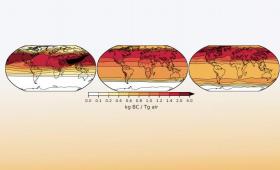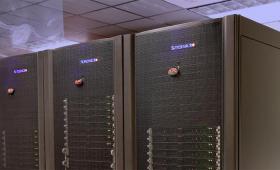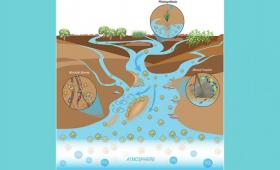Livermore scientists simulated the droplet ejection process in an emerging metal 3D printing technique called “liquid metal jetting.”
Science and Technology Highlights

A team of Livermore scientists has modeled the global climatic consequences of a regional nuclear weapons exchange.

A research team has developed a 3D-printed electrode that lessens the problems that occur with gas bubbles that are generated during water electrolysis.

Livermore researchers have used multi-material 3D printing to create tailored gradient refractive index glass optics.

Livermore houses four of the world’s 100 most powerful supercomputers, more than any other institution according to the TOP500 list.

Livermore has deployed “Ruby,” a high performance computing cluster that will perform functions for the National Nuclear Security Administration and support the Laboratory’s COVID-19 research.

A long time ago — roughly 4.5 billion years — our sun and solar system formed over the short time span of 200,000 years.

Livermore, Total, and Stanford University are releasing an open-source, high-performance simulator for large-scale geological carbon dioxide storage.

Livermore and its partners AMD, Supermicro and Cornelis Networks have installed a new high-performance computing (HPC) cluster with memory and data storage capabilities optimized for data-intensive COVID-19 research and pandemic response.

Livermore scientists and collaborators have created a new conceptual framework as well as a simulation model that traces the path of individual carbon atoms as they interact with the environment.

